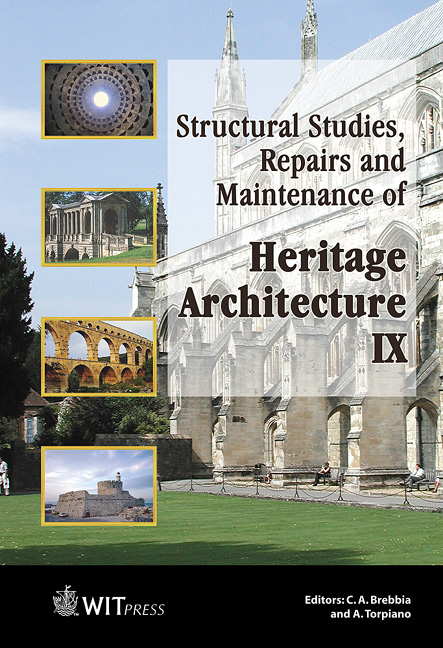Know How To Restore: Construction Techniques In Baroque Rome – Practices, Devices And \“secrets”
Price
Free (open access)
Transaction
Volume
83
Pages
10
Published
2005
Size
2,292 kb
Paper DOI
10.2495/STR050081
Copyright
WIT Press
Author(s)
N. Marconi
Abstract
In the 17th Century, Roman construction techniques attained unrivalled results, derived from experimentation carried out in the greatest building sites of the Renaissance. Such was the success that the so-called \“Roman construction system” became an effective, fast and technologically advanced working method that lasted, basically unchanged, up to the 20th Century. Baroque building practices hide a number of secrets and devices which not only represent an extraordinary preview of some present construction techniques, but also contribute to clarify the reason for the lasting effectiveness of these traditional construction methods. Among the most popular techniques of the Roman Baroque building practices, we have the methods used to lengthen the setting time of masonry mortar, strongly recommended by Francesco Borromini; the use of special mechanical devices; the stratagems introduced in brick manufacture and laying; the special procedures followed in the supply and the working of lime, plaster and freestone. Keywords: building site, construction techniques, masonry, building materials. 1 Introduction The organisational, operational and technical mechanisms of Roman Baroque building sites allow us to retrace the history of single buildings and their materials, but also to identify the factors that determined the image of modern Rome. The latter began to take shape as of the 16th Century when a series of important building projects were undertaken. Initially, they belonged to major, wide-ranging urban plans such as the ones announced by Pope Sixtus V Peretti (1585-1590), but then other single projects for new buildings or the
Keywords
building site, construction techniques, masonry, building materials.




